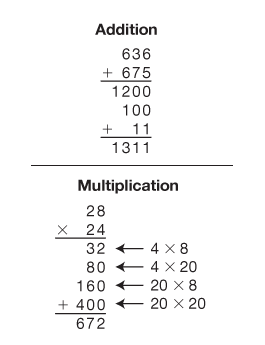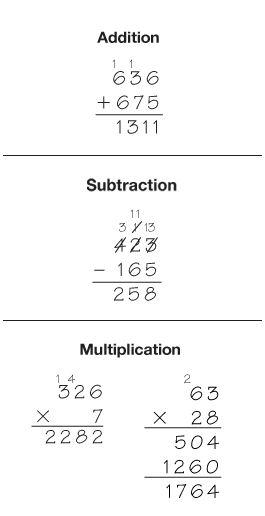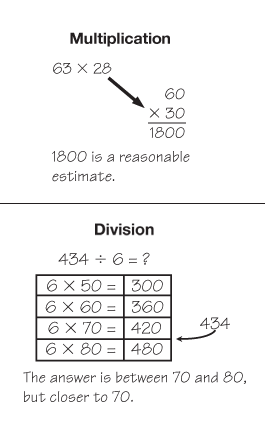Students apply strategies involving estimation, mental math, and paper-and-pencil methods to solve problems involving two-digit multiplication. This lesson focuses on choosing and applying strategies flexibly to match the context of problems. Students also use these strategies to solve an extended, open-response problem involving two-digit multiplication.
Content in this Lesson
- Deciding when to estimate and when to find exact answers [E6].
- Estimating products of multidigit numbers [E3].
- Multiplying 2-digit by 2-digit numbers using mental math strategies and paper-and-pencil methods (e.g., expanded form, all-partials) [E4].
- Multiplying 2-digit by 2-digit numbers using the compact method [E5].
- Choosing appropriately from among estimation, mental math strategies, and paper-and-pencil methods to multiply multidigit numbers [E6].
- Choosing good tools and an efficient strategy for solving the problem [MPE2].
- Checking an answer for reasonableness [MPE3].
- Communicating solution strategies [MPE5].
- Demonstrating fluency with the division facts for the last six facts [E7].
Daily Practice and Problems O–R
Assessment in this Lesson
| Assessment | Expectation Assessed | Math Practices Expectation Assessed |
|---|---|---|
|
Choosing Strategies to Multiply Check-In: Questions 23–27 Student Guide Pages 524–525 |
|
|
|
Dancing in TIMSville Student Activity Book Pages 498–502 |
|
|
|
DPP Item O Facts Quiz: Last Six Facts Teacher Guide - digital |
|

















